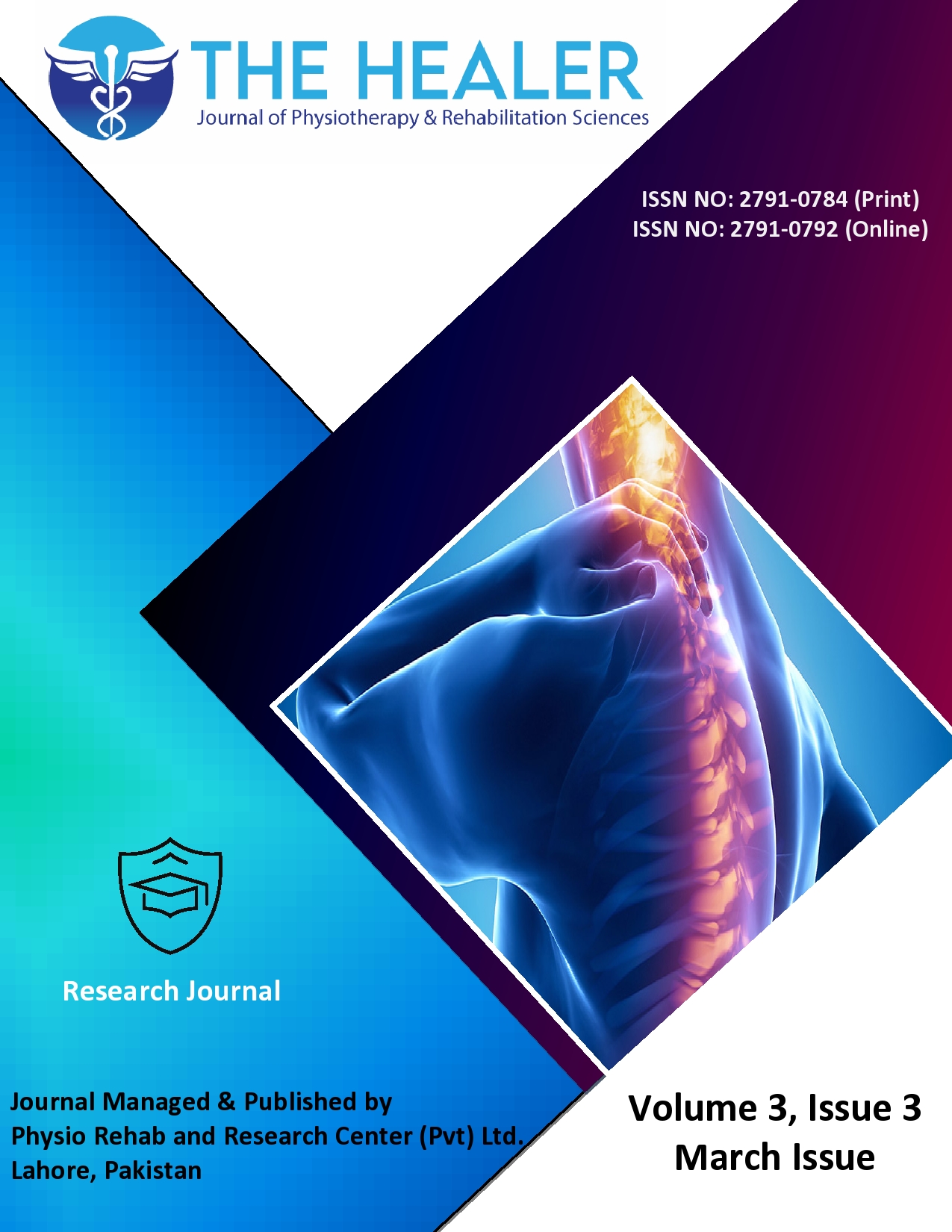Prevalence of COVID-19 Pandemic Threat; Implications of Social Quarantine as Preventive Public Health Intervention
COVID 19 & Implications of Social Quarantine
DOI:
https://doi.org/10.55735/hjprs.v3i3.111Keywords:
COVID-19 , pandemic, public health intervention, social quarantineAbstract
The emergence of coronavirus back in 2019 posed an epidemic threat to global public health security even after the execution of precautionary and control measures. The infectious disease was first identified in Wuhan, China and spread rapidly to multiple countries. Gradually, it caused casualties of people with a large number of coronavirus cases. Different countries implemented several interventions to mitigate the human-to-human transmission of this disease including travel restrictions, setting up isolation centers, lockdowns, and social quarantine. A systematic search was implemented through five electronic databases (PubMed, WHO, NIH, Scopus and Google Scholar). Research studies that were published until 30th May 2021 were included in this study, and eligibility criteria were selected for this review. The study shed light on the critical aspects of the implications of social quarantine preventive intervention to avoid the spread of COVID-19. The lessons learned from the pandemic can help the future preparedness and response plan to combat the progression of this disease. Yet limited studies have been conducted about the socio-economic impact of these social-distancing measures for most vulnerable populations. In this study, various research studies that have reported the positive and negative impact of physical distancing on the population were evaluated. In this situation, the Pakistani government must combat the coronavirus disease and take steps to improve the economic condition of the country. Special attention must be paid to the most disadvantaged and vulnerable populations such as the disabled, older population, homeless and poor populations to lessen the risks of coronavirus disease. Policymakers must ensure transparency in communication and provide evidence-based interventions to tackle the worse situation. The countries must coordinate their efforts to develop antivirals and vaccines for the treatment of infectious fatal diseases. Government must support the community through access to the use of technology, and home care to older residents, deliver health counseling services, and deliver home-based learning. All countries must use print, electronic and social media wisely and they must be coordinated, and provide education and social awareness among the citizenry regarding how to avoid being infected.
Downloads
References
Wilder-Smith A, Freedman D. Isolation, quarantine, social distancing and community containment: pivotal role for old-style public health measures in the novel coronavirus (2019-nCoV) outbreak. J. travel medicin. 2020;27(2):1-4. https://doi.org/10.1093/jtm/taaa020.
Zhou F, Yu T, Du R, Fan G, Liu Y, Liu Z, et al. Clinical course and risk factors for mortality of adult inpatients with COVID-19 in Wuhan, China: a retrospective cohort study. The Lancet. 2020;395(10229);1055-1062. https://doi.org/10.1016/S0140-6736(20)30566-3.
Pung R, Chiew CJ, Young BE, Chin S, Chen MI, Clapham HE, et al. Investigation of three clusters of COVID-19 in Singapore: implications for surveillance and response measures. The Lancet. 2020;395(10229);1039-1046. https://doi.org/10.1016/S0140-6736(20)30528-6.
Rodriguez-Morales A, Tiwari R, Sah R, Dhama K. COVID-19, an Emerging Coronavirus Infection: Current Scenario and Recent Developments-An Overview. J. Pure Appli. Microbiol. 2020;14(1):1-8.
Kandel N, Chungong S, Omaar A, Xing J. Health security capacities in the context of COVID-19 outbreak: an analysis of International Health Regulations annual report data from 182 countries. The Lancet. 2020; 395(10229);1047-1053. https://doi.org/10.1016/S0140-6736(20)30553-5.
Bedford J, Enria D, Giesecke J, Heymann DL, Ihekweazu C, Kobinger G, et al. COVID-19: towards controlling of a pandemic. The Lancet. 2020;395(10229);1015-1018. https://doi.org/10.1016/S0140-6736(20)30673-5.
Wu Z, McGoogan JM. Characteristics of and important lessons from the coronavirus disease 2019 (COVID-19) outbreak in China: summary of a report of 72 314 cases from the Chinese Center for Disease Control and Prevention. Jama. 2020;323(12);E1-E4. doi:10.1001/jama.2020.2648.
Lewnard JA, Lo NC. Scientific and ethical basis for social-distancing interventions against COVID-19. The Lancet Infectious Diseases. 2020;20(4);1-2. https://doi.org/10.1016/S1473-3099(20)30190-0.
Li, L., Taeihagh, A., & Tan, S. Y. (2023). A scoping review of the impacts of COVID-19 physical distancing measures on vulnerable population groups. Nature communications, 14(1), 599.
Saqlain M, Munir MM, Ahmed A, Tahir AH, Kamran S. Is Pakistan prepared to tackle the coronavirus epidemic? Drugs & Therapy Perspectives. 2020;1–2.
Gao J, Tian Z, Yang X. Breakthrough: Chloroquine phosphate has shown apparent efficacy in treatment of COVID-19 associated pneumonia in clinical studies. Bioscience trends. 2020;1-2. https://doi.org/10.5582/bst.2020.01047.
Long NJ. From social distancing to social containment: reimagining sociality for the coronavirus pandemic. Medicine Anthropology Theory. 2020.
Rubin GJ, Wessely S. The psychological effects of quarantining a city. Bmj. 2020;368. https://doi.org/10.1136/bmj.m313.
Coronavirus in Pakistan: total number of COVID-19 cases in Pakistan. Geo News (Internet). (Accessed 2 April 2020); https://www.geo.tv/latest/276607-coronavirus-pakistan-current-status-of-reported-cases-and-deaths.
World Health Organization (WHO), Coronavirus disease 2019 (COVID-19) Siutation Report -72; (Accessed 1 April 2020) p.12. https://www.who.int/docs/default-source/coronaviruse/situation-reports/20200401-sitrep-72-covid-19.pdf?sfvrsn=3dd8971b_2.

Downloads
Published
License
Copyright (c) 2023 The Healer Journal of Physiotherapy and Rehabilitation Sciences

This work is licensed under a Creative Commons Attribution 4.0 International License.














